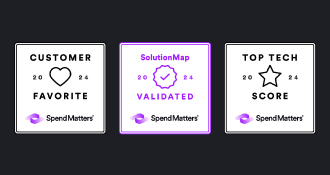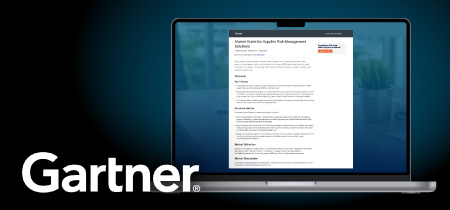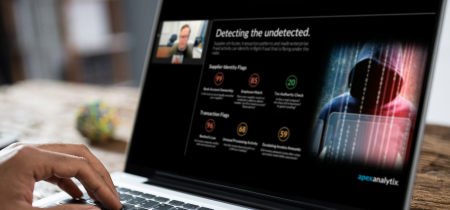
There is no better way to uncover industry trends than to ask actual procure-to-pay leaders what’s on their mind. And that’s what our apexanalytix team has done. Over the past year we’ve gathered insights via our Financial Leaders Benchmarking and Technology Benchmarking surveys. We’ve canvassed hundreds of attendees at our Elite conferences for financial services executives and at association-sponsored events around the globe. And we’ve spoken directly to leaders of some of the most successful P2P organizations on the planet. What we’ve learned points to five procure-to-pay megatrends for 2020 that span a variety of industries across global geographies.
1. Controls to battle sophisticated fraud scams.
Businesses lose billions each year to P2P fraud, and today the threats are more costly and sophisticated than ever. The FBI says losses from hacking, phishing and other business email compromise schemes have doubled year-over-year—now totaling more than $26 billion globally. Companies are fighting back with a broad range of new controls.
A few examples: Purpose-built fraud detection software is being used to identify scam artists that escape traditional controls. New cloud-based tools are being used to verify bank accounts in real time and ensure payments go to trusted suppliers and not fraudsters. Supplier portals are automatically validating supplier data in real time as it is entered. And vendor risk analysis experts are scouring vendor records to uncover fraud, OFAC violations and more.
2. A new focus on supplier data.
Only 7 percent of the companies we surveyed this year trust their vendor data. But a growing number are taking proactive steps to turn the tide. To shore up their vendor master and develop a single, trusted source of the truth, they are adopting vendor master cleansing solutions to root out issues. These tools help them automatically identify bank account numbers that don’t match company names, vendors found on government watch lists, invalid tax ID/name combinations, duplicate vendors and more. They are also using real-time data validation and continuous monitoring to protect their vendor master as new suppliers are added or existing records are updated.
What are companies doing with this “golden” supplier data? They are powering new strategic initiatives—from dynamic discounting to supplier spend consolidation. And as a bonus, they are making dramatic reductions in supplier-related risks.
3. Cloud-based AI for big data analysis.
P2P teams are buried in mountains of data—much of it stored in siloed systems using incompatible data formats. Companies turning to the cloud for artificial intelligence (AI) based analytics can span this technology divide and help them uncover vital insights.
Two examples: Companies are analyzing and segmenting supplier data in the cloud to help them design more effective early-pay discounting programs that can boost working capital and offset costs. They also are analyzing supplier risks that may be hiding in plain sight—found in news articles written by journalists around the globe. Cloud-based AI solutions screen and score articles that mention a company’s suppliers. They rank-order risks and deliver real-time alerts about emerging threats.
4. Expansion of touchless workflows.
Our benchmarking data shows best-in-class performers have transformed invoicing and payment processing with 100 percent touchless workflows. But there are strong signals this touchless approach is broadening. More than 40 percent of respondents in our benchmark surveys have plans to adopt new technologies to transform other P2P processes.
Further data on this trend comes from a survey of more than 120 AP and P2P execs attending industry events. Nearly 70 percent say they intend to adopt web-based, supplier self-service portals for onboarding, supplier inquiries and supplier information management. Doing so gives them a central hub that automates interactions and policy enforcement across every supplier and then syncs the data with source-to-settle systems.
Companies are also adopting touchless, paper-free approaches to accounts payable audits. Predictive analytics, robotic process automation and microtargeting are being used to speed up recoveries by helping teams identify suppliers where the recoveries will be the greatest.
5. A renewed emphasis on people and partnerships.
Though technology is at the forefront of the megatrends we’ve uncovered, companies are also focused on organizational and people initiatives that help them weather the challenges and risks involved in mergers, acquisitions, spinoffs and changing market dynamics. And that includes an emphasis on collaboration across functional siloes.
Though our benchmarking survey shows nearly all participants have a long-standing partnership between procurement and accounts payable, for the first time more than 50 percent of respondents also report a close partnership between AP and internal audit. And more than 40 percent say they are partnering closely with their company’s compliance and regulatory teams.
Learn more
Want to stay informed and on trend?
• View our “Ultimate P2P Benchmarking Report” Webinar.
• Get a free copy our 2019 Financial Leaders Benchmarking Report.






